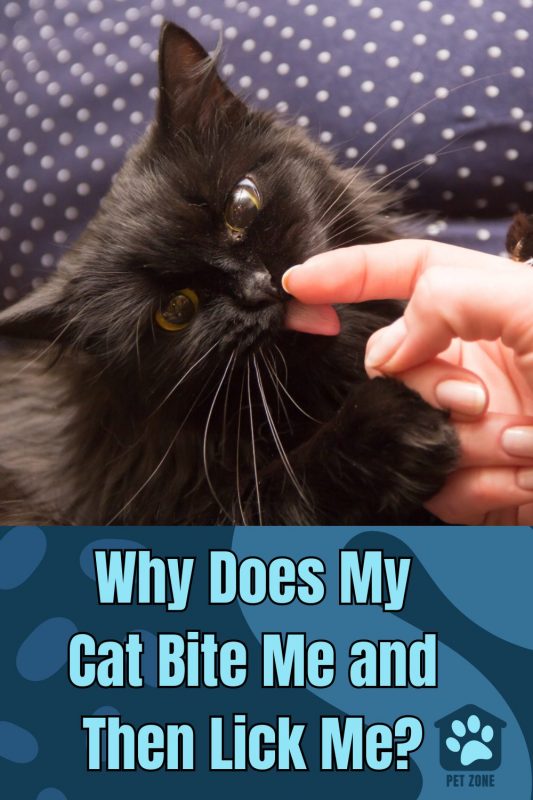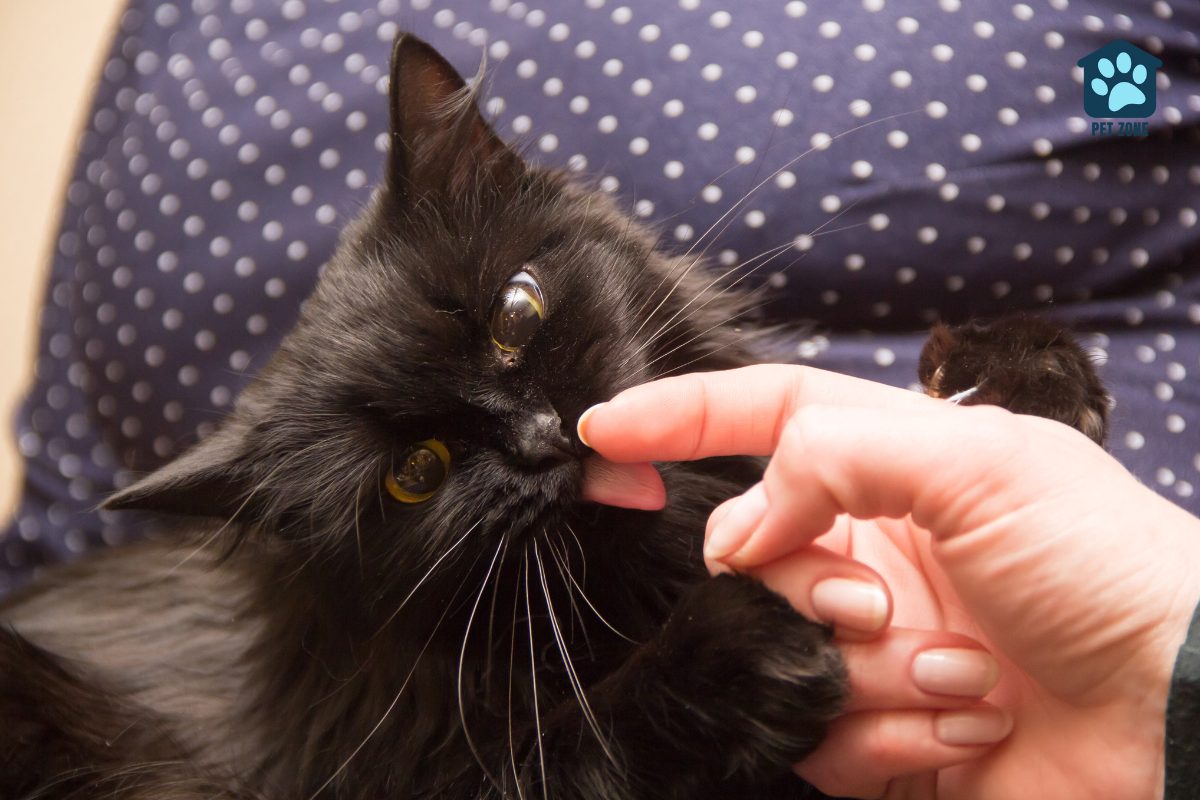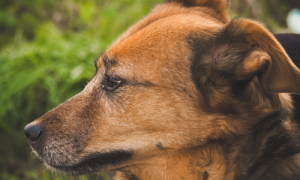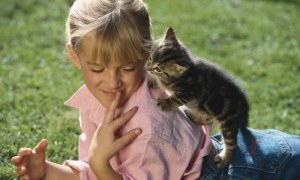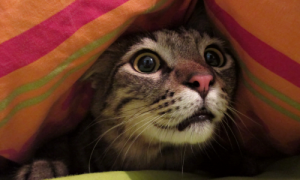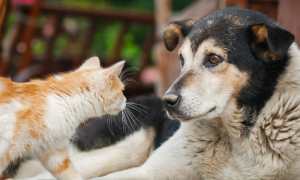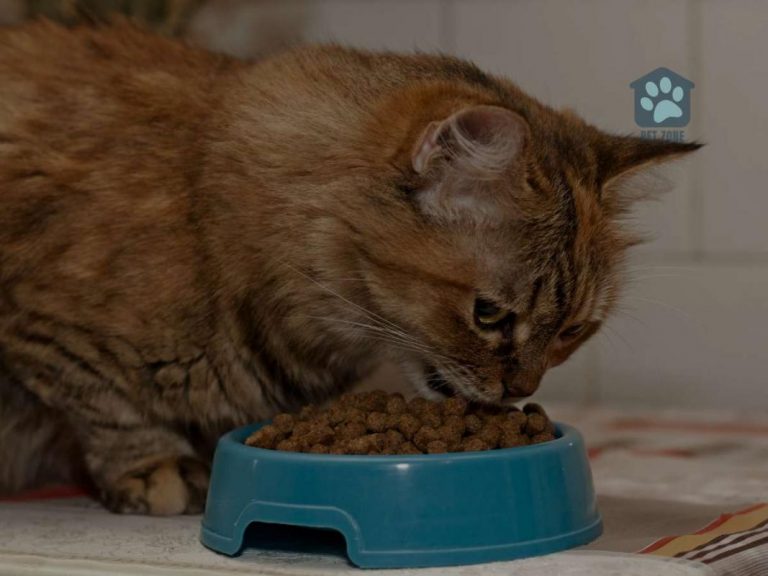Estimated reading time: 10 minutes
Every cat parent has been there: you’re playing with your cat when suddenly they bite you—and then immediately lick you afterward. This quirky behavior can leave you trying to understand what your kitten is trying to tell you.
Cats are known for their mysterious ways, including a unique mix of biting and licking that can seem confusing.
One crucial fact to know is that this behavior has deep roots in how cats communicate with each other and with us.
This article will discuss the reasons behind these mixed signals—playfulness, affection, overstimulation, or something else entirely—and how you should respond when faced with such actions from your kitty.
Key Takeaways
- Cats bite and lick to communicate, showing playfulness, affection, or even overstimulation. It’s their way of interacting with us since they can’t talk.
- Biting followed by licking can also be a sign of grooming behavior, where your cat treats you like part of their feline family, showing trust and care.
- Understanding your cat’s body language is important in knowing how to respond. Pay attention to cues like purring or tail twitching to gauge their mood.
- To discourage rough biting, redirect your cat’s energy toward toys instead of hands and offer positive reinforcement for gentle behavior.
- Giving your cat space when they show signs of wanting it helps build a happier relationship. Recognize when they are overwhelmed or need a break from interaction.
Understanding Cat Behavior
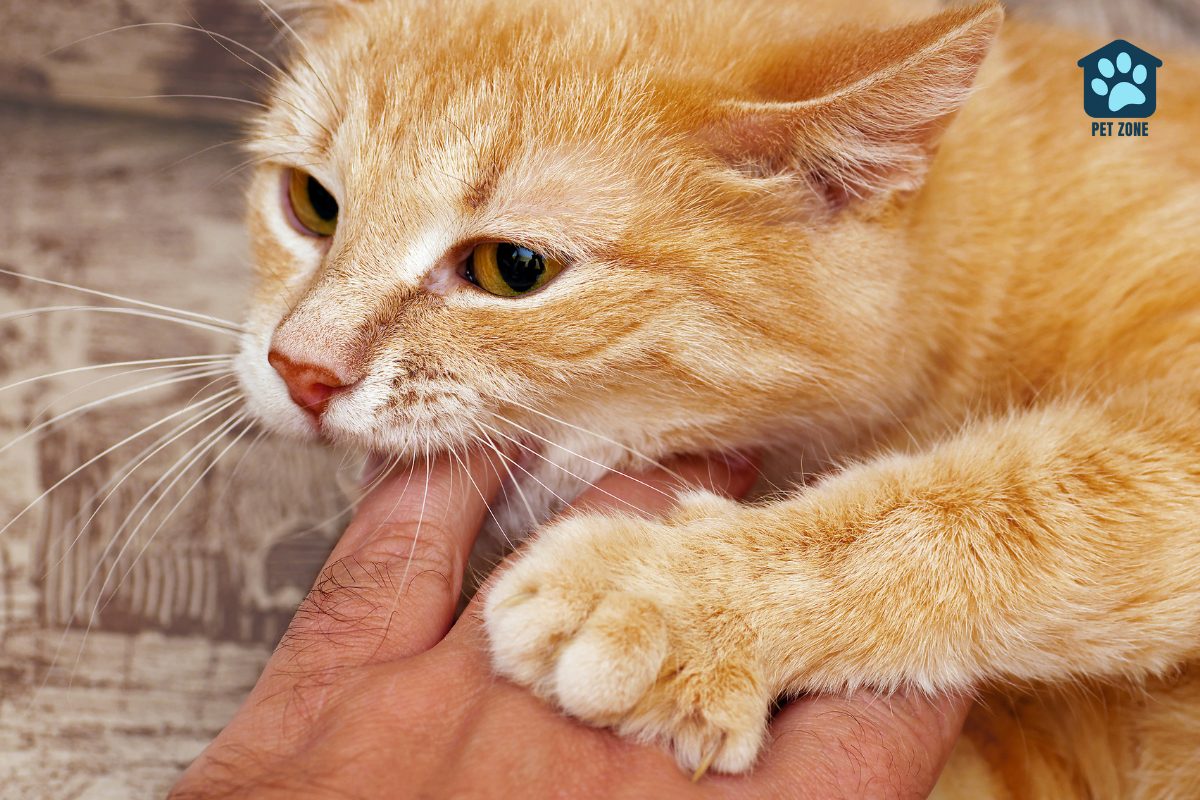
Natural Instincts
Your cat’s instincts play a huge role in their biting and licking behavior. Just like they might bite and lick their fur to remove tangles, they treat you similarly.
This grooming behavior is a sign of trust and affection. It shows they are comfortable enough with you to display habits reserved for themselves or close feline companions.
In the wild, kittens learn to hunt and communicate through playful biting among each other. When your pet bites and then licks you, they are acting on these ingrained behaviors.
They aren’t just pets; they’re predators at heart, using playtime to hone skills essential for survival. Such actions towards you indicate they view you as part of their pack; a high honor in the cat world!
Communication
Cats use biting and licking as one way to talk to us. They cannot speak, so they show what they want or feel through actions.
Biting and then licking can mean many things. Maybe your cat is trying to tell you it’s playtime, or perhaps it’s a sign of affection. Think of it as a love bite followed by a kiss. Understanding their body language is key.
For example, if a cat bites its fur to remove tangles and then licks the spot clean, it’s doing self-care. When this behavior is directed at you, your cat might be treating you like another cat – showing trust and wanting to play.
Always look for cues like purring or soft pawing; these signs might help figure out what your cat wants or needs.
Possible Reasons for Cat Biting
Playfulness
Sometimes your cat may bite and then lick you because they want to play. They treat you like another cat, using their mouth and tongue in a game.
This behavior is a sign of trust and a desire for interaction. It’s how they show affection and invite you to engage with them.
Your cat uses biting followed by licking as a way to communicate playfulness. If they start biting your hand gently before licking it, consider this an invitation to interact.
Provide them with cat toys or engage in playtime activities that help release their pent-up energy safely and positively.
Overstimulation
Cats get overstimulated easily. They love playing and being petted, but too much can make them uncomfortable. Your cat’s body language will tell you when they’ve had enough.
Look for signs like a twitching tail or flattened ears. These are your cat’s way of telling you to stop.
Biting and then licking often happens after overstimulation. It’s their method to calm down and show affection at the same time.
If your cat does this, it means they need a break from the activity. Give your cat some space and let them come to you when they’re ready for more interaction.
Testing Boundaries
Sometimes your cat might be trying to see how much they can get away with. This is their way of testing boundaries.
They nibble on you, then wait for your reaction. It’s like they are asking, “Is this okay?” If you don’t stop them, they might think it’s fine to keep going.
Playfulness often leads to a bite and then a lick. They treat you like another cat, showing both affection and curiosity.
Your response teaches them what behavior is acceptable around you. By responding gently but firmly, you guide them in understanding when biting is not appropriate.
Redirecting their energy to toys or games can help prevent bites while still keeping playtime fun and safe.
Fear or Anxiety
Cats sometimes bite because they feel scared or anxious. It’s like their way of saying they need space.
If your cat hides or its ears are back and then it bites you, it might be feeling threatened. By licking you afterward, your cat is trying to fix the situation, showing affection even after expressing fear.
To help a scared cat, give it a quiet place to relax. Notice signs that your cat is stressed—like hiding more than usual or having an arched back before biting.
Offering comfort and a safe spot encourages trust and helps reduce anxiety-driven biting and licking behaviors in cats.
The Licking that Follows
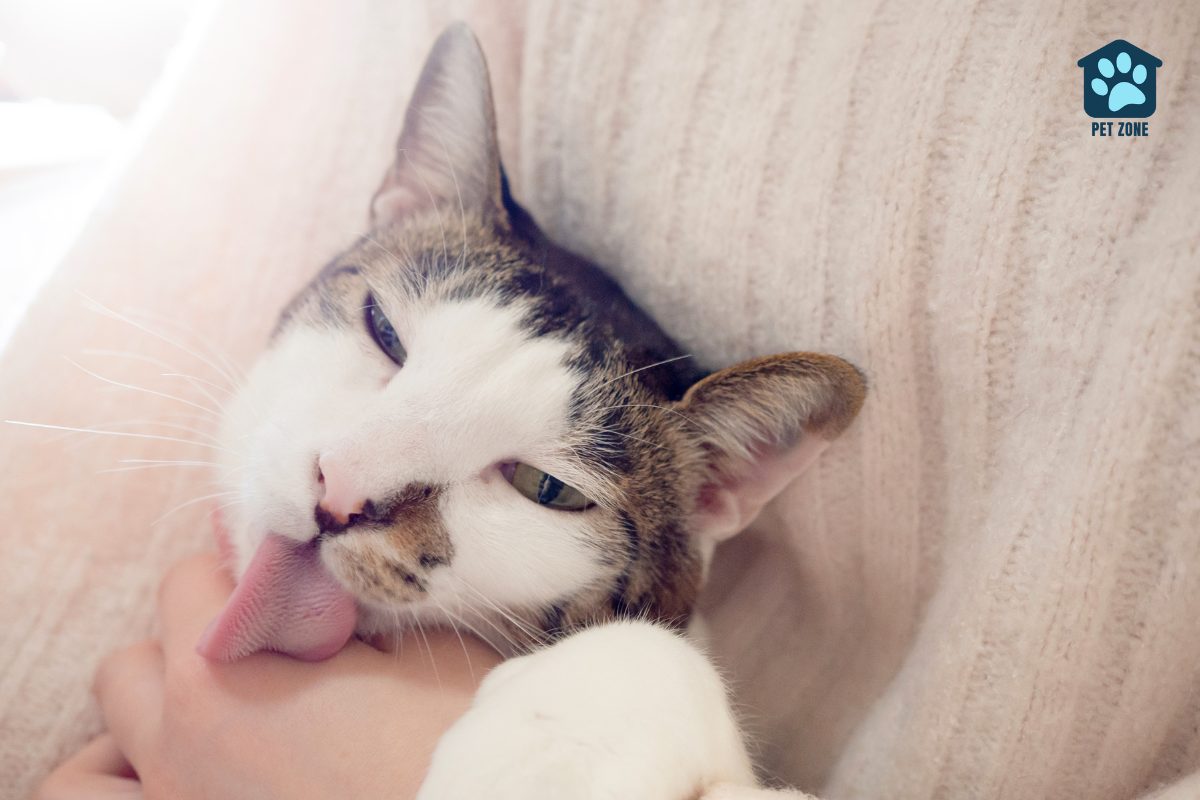
Affection
Cats show their love in unique ways, and licking after a bite is one of them. This behavior mimics how mother cats care for their kittens by grooming and nuzzling.
Your cat sees you as part of their family. So, a lick following a bite often means they are expressing affection or trying to calm down if they feel overwhelmed.
Licking helps cats connect with those they trust. They also mark you as theirs when they lick you after biting.
It’s like they’re saying, “You’re important to me.” If your cat bites gently and then licks you while purring, take it as a sign that your cat loves you and enjoys your company.
Cleaning Wounds
Cats often bite and then lick as a way of taking care of themselves. They might do this to get rid of tangles in their fur or after biting to make sure everything stays clean and soft. This behavior is not just about grooming. It’s also how they take care of wounds.
Just like when they lick their own scratches, your cat may gently lick you after a nibble. This could be their way of making sure you’re okay, showing affection while keeping the “wound” clean.
Licking can help soothe any tiny scrapes and symbolizes caring in the feline world. It’s similar to cats licking each other as part of bonding and social grooming.
Even if there are no real wounds, this action tells us that our cat sees us as part of their family—a sign of trust and comfort from your furry friend.
Grooming and Bonding
Grooming plays a crucial role in the bond between cats and their owners. Through licking, your cat is not only showing affection but also marking you as part of their family.
This behavior stems from when they are kittens, grooming each other to strengthen social bonds. Your pet sees you as a member of their group and uses licking followed by gentle bites as a way to express this connection.
When your cat licks then bites, it’s akin to how they would interact with fellow felines. This mix of actions serves multiple purposes: it helps them feel secure, shows trust, and establishes a deep bond with you.
Understanding this can make these moments special because your furry friend is displaying love in one of the most natural ways they know how.
Marking You
Cats also use licking to mark their territory, and that includes you! When your cat licks you right after a bite, it’s their way of saying you’re part of their family.
This behavior is similar to how they groom themselves or other cats they feel close to. They mix biting with affectionate licking because it’s a natural way for them to express their love and claim you as theirs.
By licking and then biting, cats are showing trust and wanting to play. They see you not just as an owner but as a member of their pack. This unique mix of behaviors helps strengthen your bond and lets them leave their scent on you.
It’s like they’re telling the world, “This human is mine!” So next time your cat bites and then licks you, understand they’re acting out of love and companionship.
How to Respond to Cat Biting and Licking
Understanding why your cat bites and then licks you can improve your bond. It’s vital to respond correctly to these behaviors.
- Look for signs that your cat is feeling playful or wants affection. If they seem happy and relaxed, a soft bite followed by licking can signal they’re in a good mood.
- Pay attention to their body language. Ears forward and whiskers relaxed usually mean they are content. However, flattened ears or a swishing tail suggest you should give them space.
- Gently discourage biting if it becomes too rough. Use a toy instead of your hand when playing, so they learn what’s acceptable to bite.
- Offer positive reinforcement when your cat shows gentle behavior. Treats, petting, or verbal praise can encourage more affectionate actions.
- Understand when to stop petting. If your cat starts biting while being petted, they may be telling you they’ve had enough. Respect their limits.
- Remove yourself from the situation if biting persists. Sometimes stepping away teaches your cat that biting ends playtime or interaction.
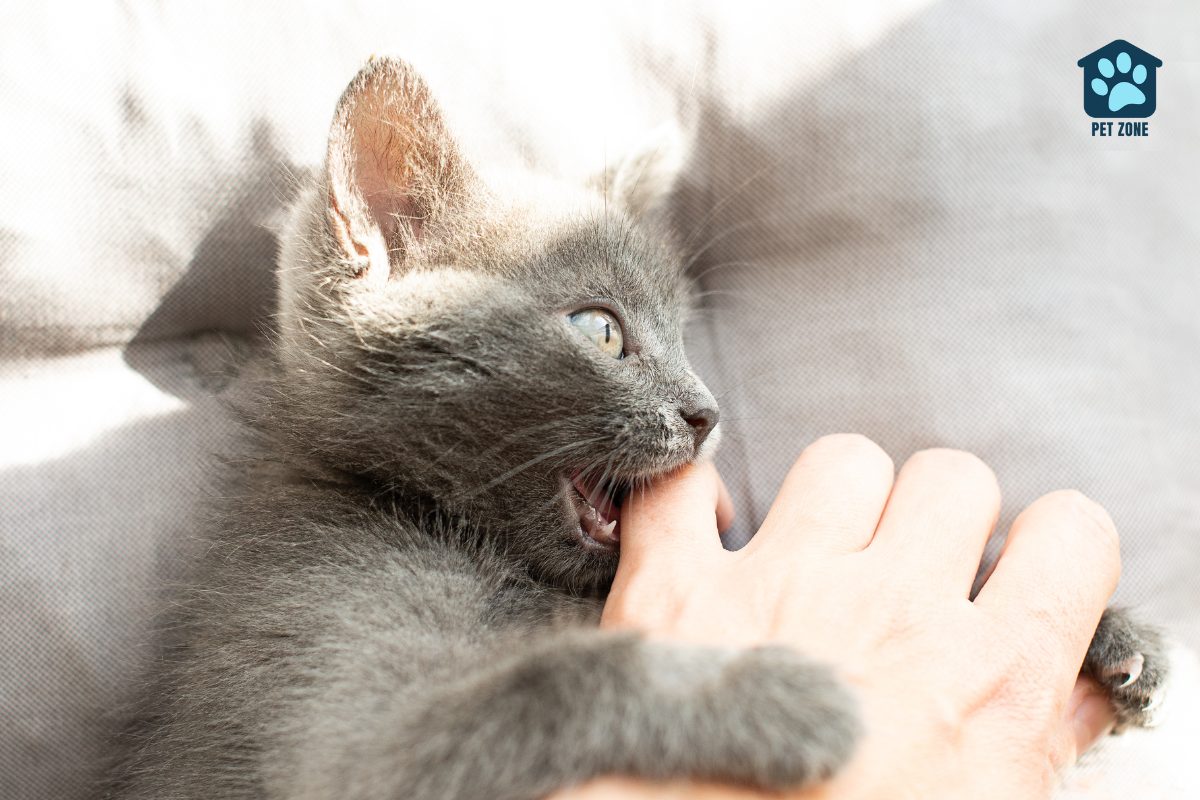
Final Thoughts
Cats show love and communicate in many ways, including biting followed by licking. This behavior can mean they’re playing or want your attention. If your cat does this, watch their body language to understand what they need.
Remember, gentle play discourages biting while still showing affection. Your understanding and response can make a big difference in your relationship with your cat.
Frequently Asked Questions
Your cat biting and then licking you is a common behavior, showing affection or wanting to play. It’s their way of expressing love, similar to how they groom themselves by biting their fur.
Yes, it’s normal! Many cats display this behavior as part of their natural ways of communicating with us. They might be telling you they’re happy or just want some attention.
Sometimes, but not often. If your cat shows signs of aggression or if the biting seems hard and painful, it could be a sign that something is bothering them. Watch their ears, whiskers, and tail for clues about how they feel.
If the bites are gentle and followed by licks, there’s no need to worry—it’s a sign of affection! However, if the bites hurt or show aggression in cats,, teaching your pet not to bite can help keep playtime safe and fun.
Enjoy these moments as signs your kitty loves you! But if you prefer not to encourage this behavior,, distract them with a toy instead whenever they start biting.,
Try observing other behaviors like purring, rubbing against you, or pouncing on toys. These actions combined with licking or biting usually mean your furry friend feels contented, wants attention, or desires to play rough.
As an Amazon Associate I earn from qualifying purchases.
